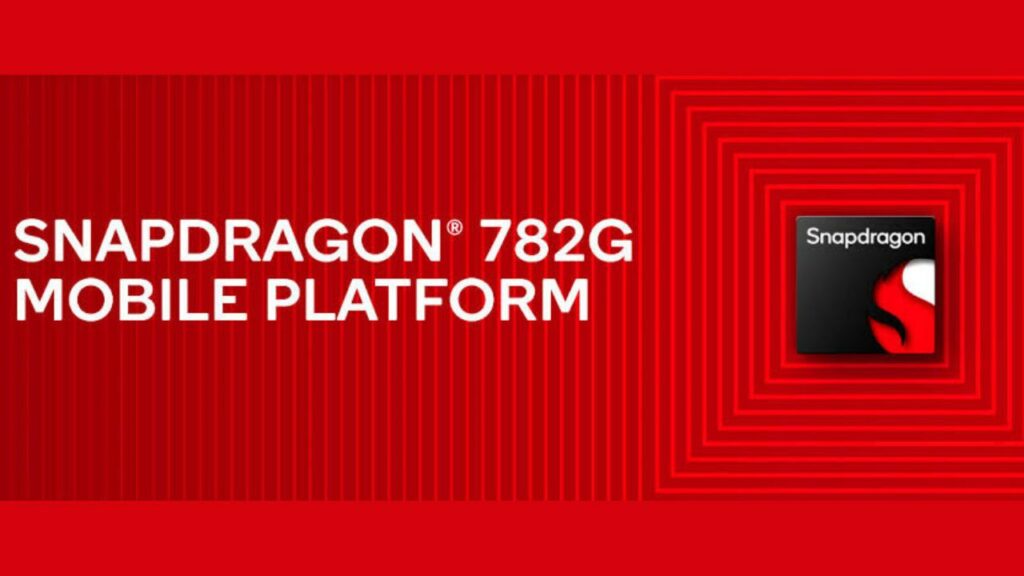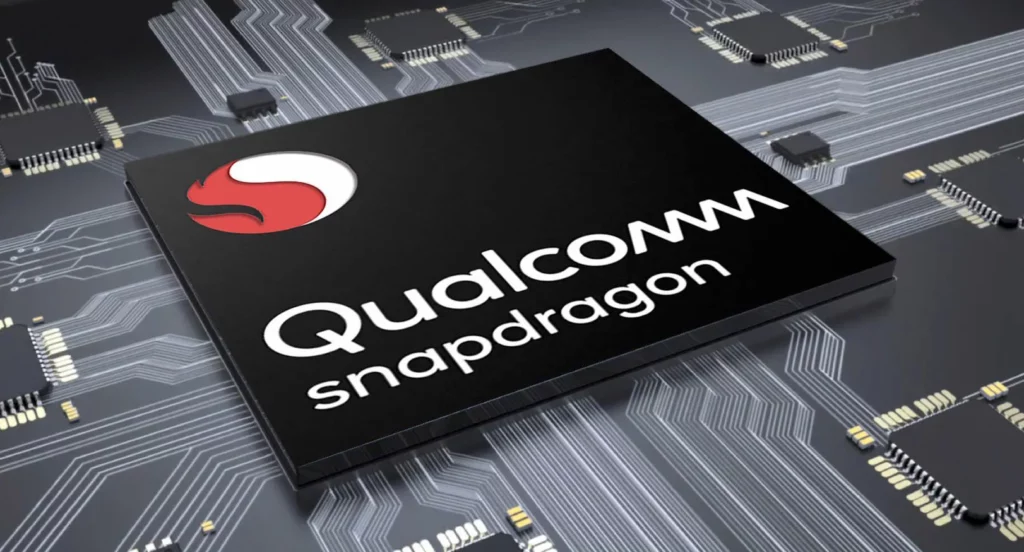Qualcomm has unveiled another chipset today, i.e., the Snapdragon 782G chipset. The announcement comes as the industry still talks about the recent launch of the flagship Qualcomm Snapdragon 8 Gen 2 chipset. The new Snapdragon 782G chipset will replace the Snapdragon 778G+ chipset used in mid-range smartphones. The chipset will be used in both mid-range and premium mid-range smartphones. It only brings a few changes over the existing Snapdragon 778G+ chipset.
Qualcomm Snapdragon 782G
The chipset bears the code number SM7325-AF and still uses TMSC’s 6nm process. It still features the same CPU and GPU as the Snapdragon 778G+ chipset. Qualcomm says the new chipset will offer a 5% performance boost over the former. It has one Cortex A78 Kryo 670 Prime core that clocks at 2.7GHz. It also gets three Cortex A78 Kryo 670 Gold cores clocked at 2.2GHz and four Cortex A55 Kryo 670 Silver cores that clock at 1.9GHz. On the other hand, the Adreno 642L GPU offers 10% better performance than the Snapdragon 778G+ chipset.

Must See: Samsung Galaxy S23 series will feature Snapdragon 8 Gen 2 with an overclocked GPU!
On the modem side, it gets a Snapdragon X53 modem that supports both mmWave and sub-6GHz 5G networks. It will offer peak downlink speeds of up to 3.7Gbps and upload speeds of up to 1.6Gbps. On the optics side, it features the Spectra 570L triple-14-bit ISP. The ISP supports up to 200MP camera sensors. The ISP can handle the simultaneous processing of images from three camera sensors (up to 22MP each). It supports 10-bit color depth and up to 4K HDR video recording in HDR10, HDR10+, and HLG formats. It also supports shooting slow-mo videos at 720p @ 240fps and 90FPS burst capture of 12MP images.

Related: OnePlus 11 will be the first smartphone to feature Snapdragon 8 Gen 2 chipset!
Snapdragon 782G supports smartphone displays with Full HD resolutions and a refresh rate of 144Hz. It also supports a 4K display with 60Hz refresh rates. The chipset also supports up to 16GB LPDDR5 RAM and UFS 3.1 storage. The chipset supports 3D Sonic fingerprint reading sensors and techs like Quick Charge 4+ and aptX Adaptive audio codec. The connectivity supports include a dual-frequency positioning system (GPS, GLONASS, NavIC, Beidou, GPS, QZSS, Galileo), Wi-Fi 6/6E, Bluetooth 5.2 (with LE Audio), NFC, and USB 3.1 Type-C. Brands like Samsung will use the chipset with its Galaxy A series smartphones, Moto with its Edge series, and the rest will follow.
